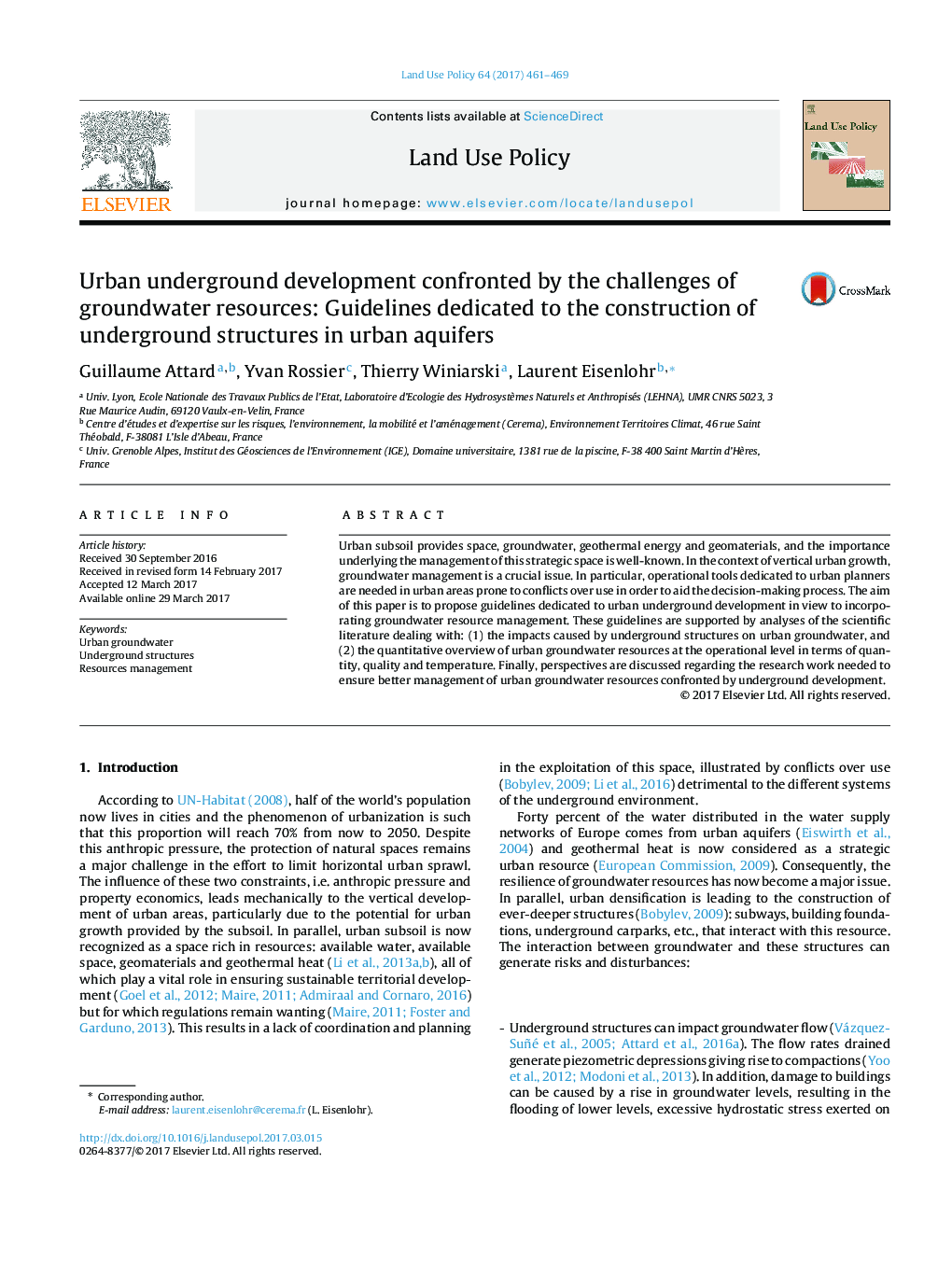| Article ID | Journal | Published Year | Pages | File Type |
|---|---|---|---|---|
| 6460878 | Land Use Policy | 2017 | 9 Pages |
â¢Underground structures impact groundwater flow quality and temperature.â¢Operational tools are needed in urban areas prone to conflicts over use.â¢Quantitative assessment of groundwater resources is a crucial step.â¢Perspectives are discussed to ensure better management of urban groundwater.
Urban subsoil provides space, groundwater, geothermal energy and geomaterials, and the importance underlying the management of this strategic space is well-known. In the context of vertical urban growth, groundwater management is a crucial issue. In particular, operational tools dedicated to urban planners are needed in urban areas prone to conflicts over use in order to aid the decision-making process. The aim of this paper is to propose guidelines dedicated to urban underground development in view to incorporating groundwater resource management. These guidelines are supported by analyses of the scientific literature dealing with: (1) the impacts caused by underground structures on urban groundwater, and (2) the quantitative overview of urban groundwater resources at the operational level in terms of quantity, quality and temperature. Finally, perspectives are discussed regarding the research work needed to ensure better management of urban groundwater resources confronted by underground development.
Graphical abstractDownload high-res image (142KB)Download full-size image
